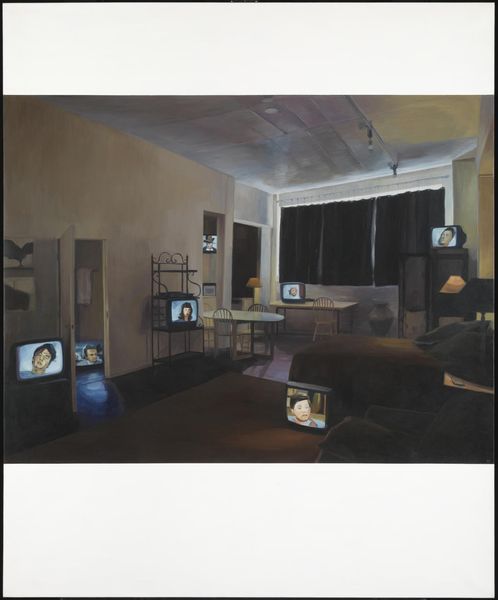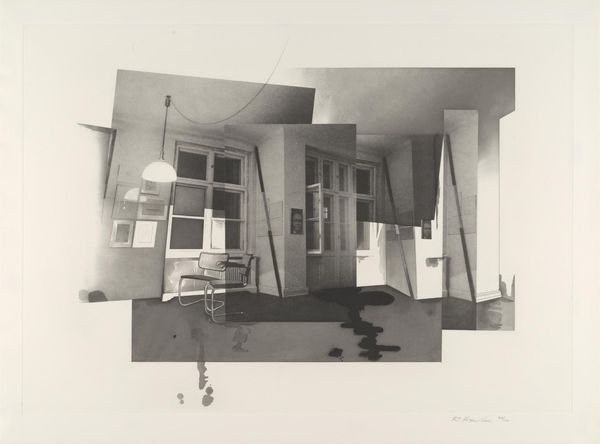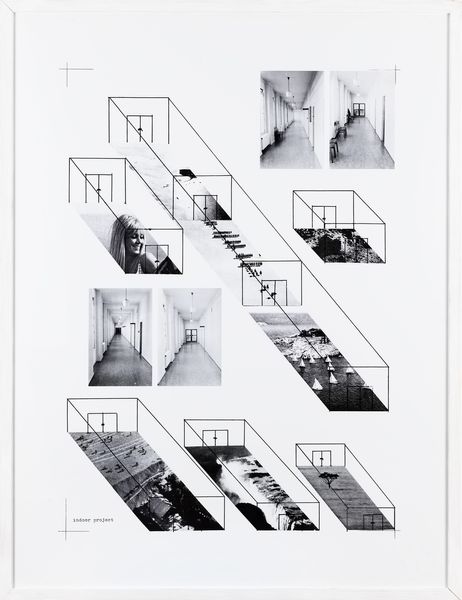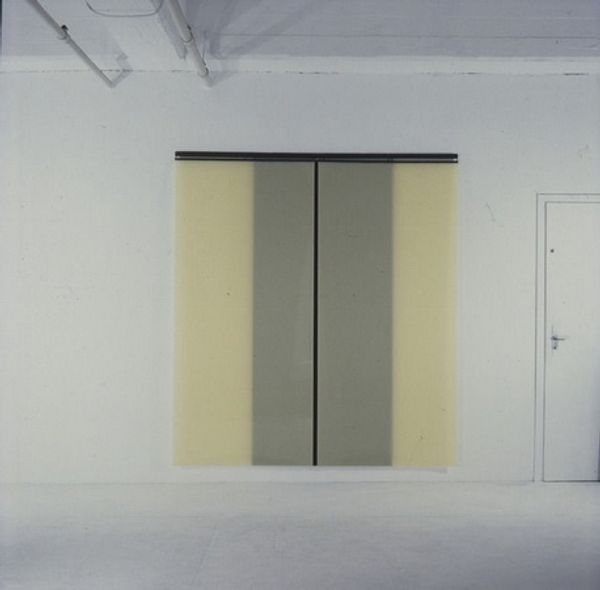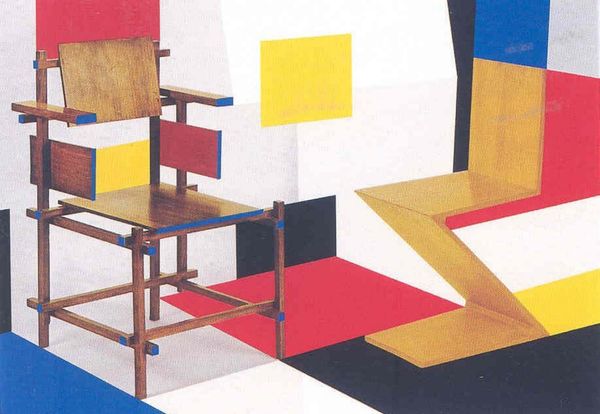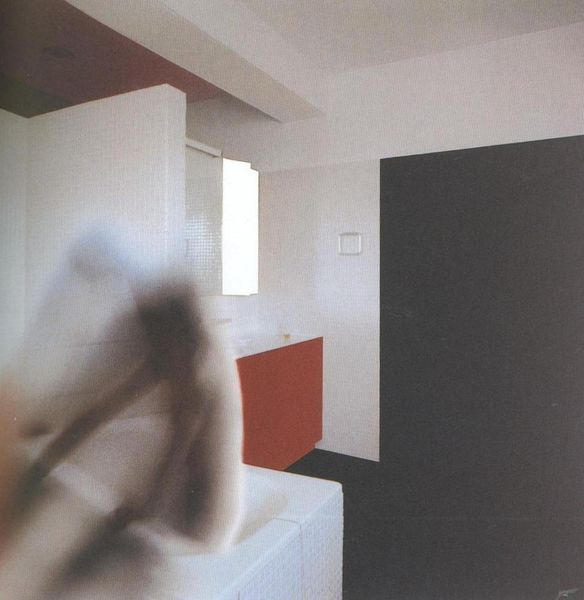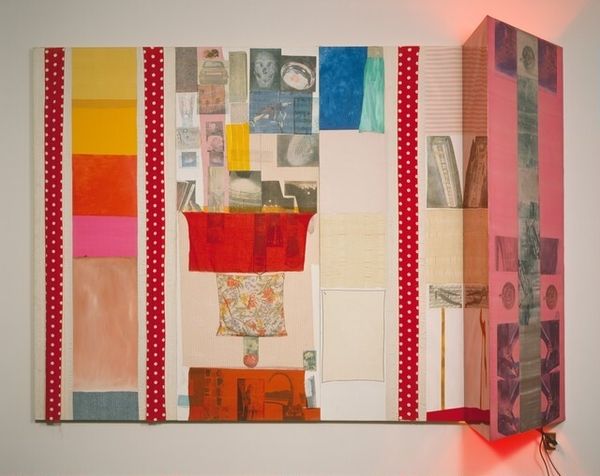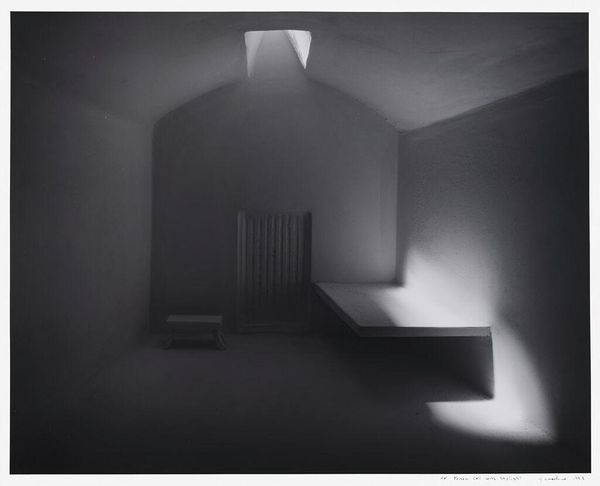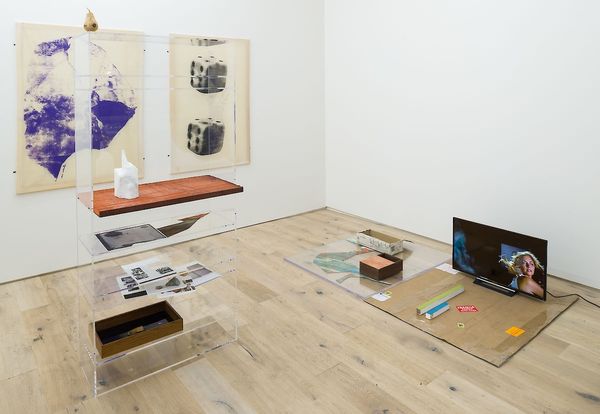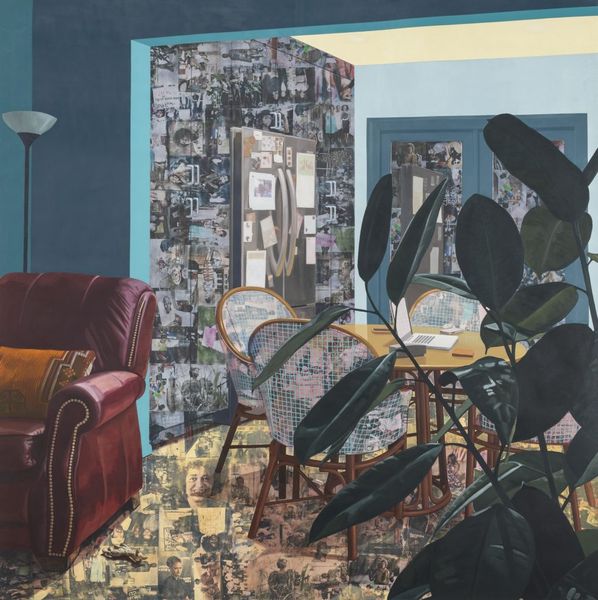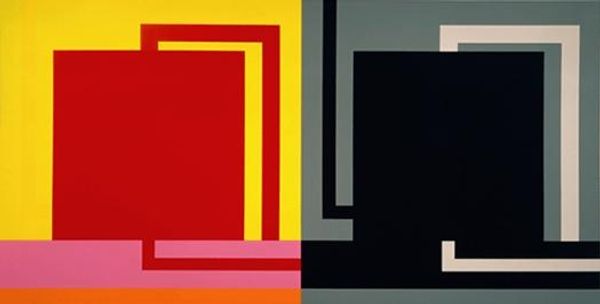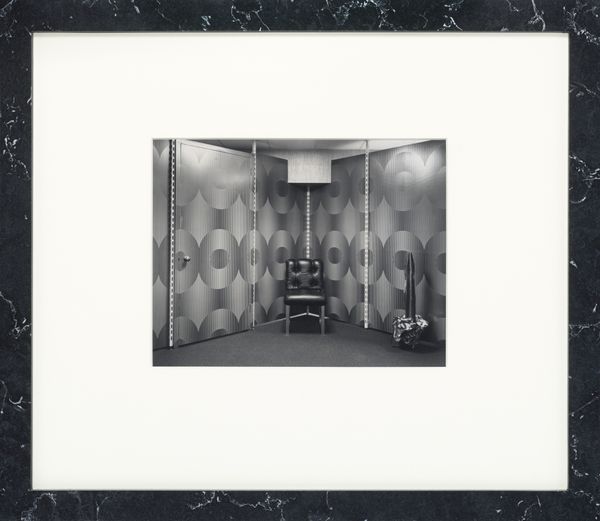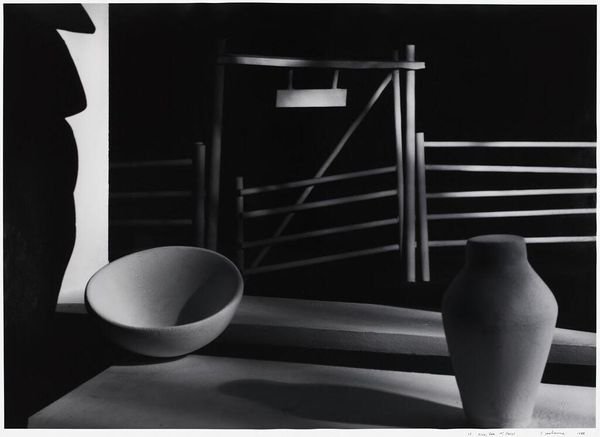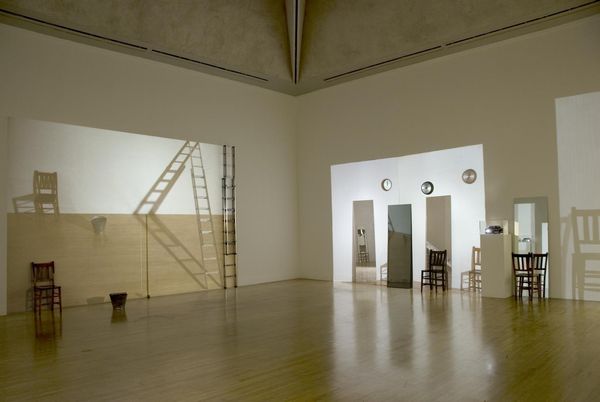
Dimensions: image: 498 x 698 mm
Copyright: © The estate of Richard Hamilton | CC-BY-NC-ND 4.0 DEED, Photo: Tate
Curator: Richard Hamilton, born in 1922, created "Interior with monochromes," an intriguing piece in the Tate Collections. Editor: Instantly, I'm getting a sense of fragmented domesticity... but also, maybe a construction site mid-renovation? Curator: The monochromatic panels, the unadorned bulb, these elements seem to subvert any easy reading of 'home'. Editor: Precisely! The color blocks almost feel like defiant statements against the dreary, unfinished quality of the spaces. Curator: The composition emphasizes flatness, denying traditional perspective in favor of a more conceptual representation of space. Editor: I like that reading. It's as though Hamilton's inviting us to rebuild our understanding of what "interior" means. Curator: Indeed. Hamilton challenges our perception. It's a statement about the artificiality inherent in representation. Editor: It's left me pondering the psychology of spaces, and the stories they hold, or don't hold, as the case may be. Curator: I concur. This prompts us to analyze the very structure of how we define our environment, and the art within it. Editor: Leaving me thinking about what it means to live in, and make art about, transitional spaces.
Comments
tate 7 months ago
⋮
http://www.tate.org.uk/art/artworks/hamilton-interior-with-monochromes-p07446
Join the conversation
Join millions of artists and users on Artera today and experience the ultimate creative platform.
tate 7 months ago
⋮
Interior with monochromes is a print made from a collage, showing a deconstructed view of an interior. On a sheet of white paper, Hamilton lined up three black and white photographs of sections of different rooms so that the line where the wall meets the ceiling is continuous from one crop to the next. The photographs take the spectator’s eye from floor to ceiling in three shots. These are: a view of a sofa, including a section of floor, in front of a wall, with only a tiny segment of ceiling included; part of an open door, seen above a sliver of floor and below a lightbulb hanging from a black electric cord; a closer view of the naked bulb hanging from a white cord in front of the intersection of two walls and the ceiling. The visual journey upwards is emphasised by the presence of a wooden ladder casually propped against the wall in the first photograph. In front of this image Hamilton collaged a coloured picture of Gerrit Rietveld’s Rood Blauwe Stoel (Red/Blue Chair) of 1918. The artist cut this out from a set of postcards that he also used to make his subsequent print, Putting on de Stijl, 1979. The same chair appears in his print Instant Painting, 1980. On the coffee table in the photograph behind the red chair a bottle of Beefeater Gin and two bottles of Schweppes tonic make reference to a ritual personal to the artist. According to Etienne Lullin, the author of Hamilton’s catalogue raisonné: ‘Gin and tonic is Richard Hamilton’s favourite drink ... In addition, gin and tonic was also part of the almost ritual handing over of the print’s proof: after the whole edition had been printed and signed, Hamilton would mix gin and tonics, light up a cigar and then ceremoniously hand over the printer’s proof(s).’ (Quoted in Lullin, p.150.)
